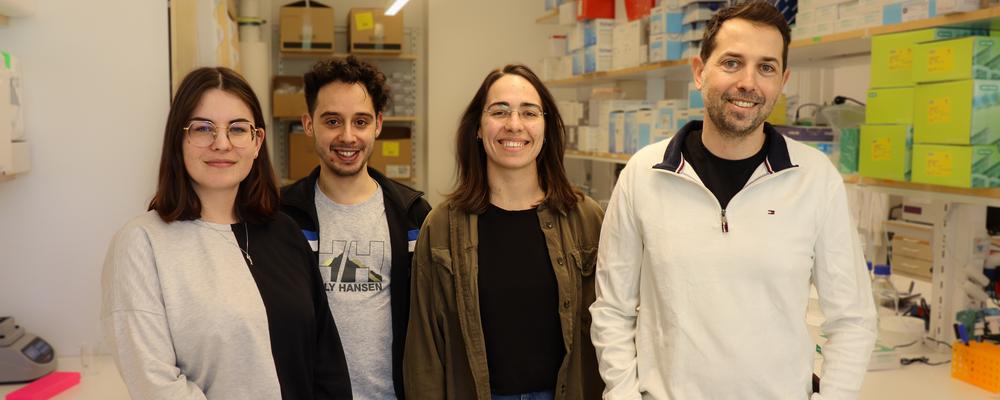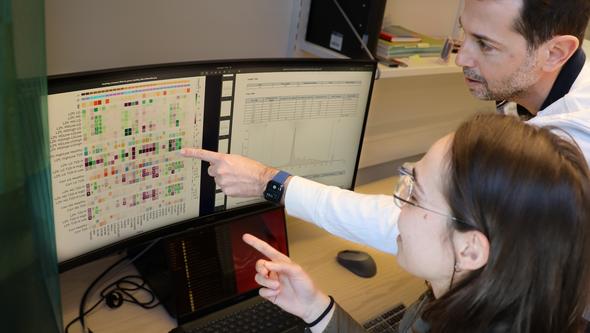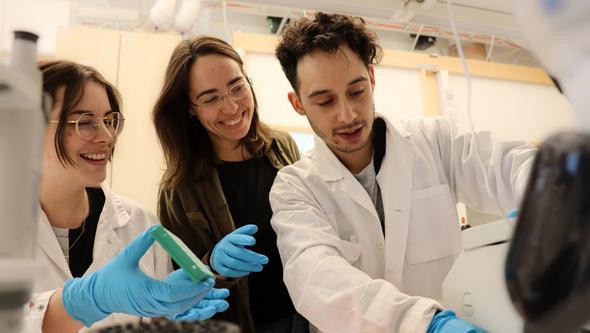
- Home
- News and events
- Find news
- Two top-rated grants to Joan Camuñas-Soler group
Two top-rated grants to Joan Camuñas-Soler group
Joan Camuñas-Soler received earlier this spring the Swedish Foundations’ Starting Grant, aimed for projects that scored an A-rating in the European Research Council’s Starting Grant. Also, his postdoc fellow Marta Gironella received a Marie Curie (MSCA) post doc-grant. Joan and Marta tell us more about the aim and possible outcome of the projects.
“With the Marie Curie post doc-grant, our main goal is to correlate the functional phenotypes of cells with their genetic expression at single-cell level. We want to optimize the data collection process, using high throughput techniques,” Joan explained.

Joan is a fellow at the Wallenberg Centre for Molecular and Translational medicine (WCMTM) and conducts his research at the Institute of Biomedicine.
One of the focus areas of the project is the beta-cells in type 2 diabetes which is linked to diet and lifestyle.
“We need more information to better understand why some cells, and subtypes of cells, manage better than others in disease.”
New techniques, different challenges
While Joan was doing his own post-doc in the United States, he also worked with single cells, but with the big difference that the work was carried out manually. This approach was very time consuming, and Joan could analyze around 10-20 cells per day. In this new project where Marta is involved as post-doc, the setting has clearly changed.
“With the automated tool that we are developing, our challenge will not be time, but rather space since the amount of data will be huge. We parallel need to have strategies on how to make the best use of the data we collect, to better understand cellular function in diabetes,” Marta said.
In this project, Joan’s team is collaborating with the labs of Anders Rosengren and Patrik Rorsman in the Department of Physiology, and internationally with the Bioengineering Unit in Chan-Zuckerberg Biohub. Joans team also collaborates closely with Core Facilities and SciLifeLab units such as the Centre for Cellular Imaging and Clinical Genomics.
The Marie Skłodowska-Curie Actions (MSCA) is Part of Horizon Europe, and is the European Union’s flagship funding program for doctoral education and postdoctoral training of researchers.
Cells with electrical activity

The European Research Council’s starting grant (ERC) is aimed for talented early-career scientist. While Joan’s application scored an A in the well-renowned peer review process, he narrowly missed out the 2023 call. To support prominent research projects at Swedish institutes such as this, the Swedish Foundations’ Starting Grant (SFSG) is available.
Three SFSG grants were awarded this year, Joan Camunas-Soler being one of them. The grant funds excellent research and innovation. Joan Camuñas-Soler was granted 3 MSEK per year over a 5-year period.
“In this project we aim to create a tool to study functions in cell types that have electrical activity in the human body. One main focus is beta cells in the pancreas that make insulin. We will also look at cardiomyocytes in the heart that create the beating of the heart, and also at neurons in the brain that send electrical signals.”
The idea of the project is to create a technology that can measure the actions of the cells in tissue where the cells interact with each other.
“This allows to preserve the structure they have in the human body, and we get closer to normal physiology in our experiments. In contrast, when you work with dissociated cells, you lose information that you cannot recover.”
Cooperation on heart disease
By creating this new technology and integrating it with existing tools as well as with various data modalities, Joan is hoping to better understand how these specific cells interact and affect each other as well as why some of them manage to function despite of disease.
While working with cardiomyocytes in the heart, Joan collaborates closely with research groups at the Wallenberg Laboratory focusing on heart disease. The project also has international collaboration through Patrick McDonald at the university of Alberta in Edmonton.
“Collaboration and exchange of ideas is key for us and for the success of the projects,” Joan concluded.

